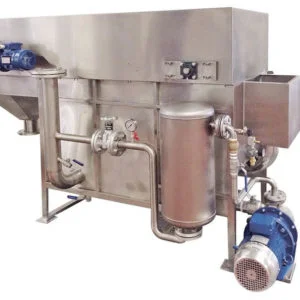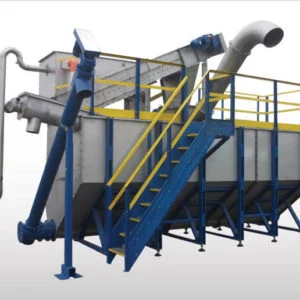Sludge Treatment
Independently tested, compact and energy efficient treatment and dewatering of secondary biological and DAF sludge with low running costs.
Bespoke design for site specific sludges
Solutions suitable for any industrial application
Reliable processes
Advanced treatment technologies
Description
Biocell sludge pressing and thickening systems are an ideal solution for reducing and dewatering secondary biological sludge and DAF sludges. We design our systems to suit site specific sludge characteristics and to meet any dry solids requirement. Our industrial sludge presses are compact and energy efficient. By using reliable processes and a variety of technology we are able to produce sludge treatment plants that have minimal running costs and trouble free operation. Furthermore, we design and manufacture our industrial sewage systems to international standards and have global reference projects for the technology we use. There are no restrictions when it comes to the sludge type or the target dry substance.
Some typical industrial applications for our sludge treatment solutions;
-
Food processing sludges
-
Brewery sludge
-
Abattoir sludge
-
Fish processing plant sludge
-
Dairy sludges
- Agricultural sludges
Biocell water offers both sludge thickeners and mechanical sludge presses.
Sludge Presses
Sludge from DAF (dissolved air flotation) and FBR, SBR (biological aerobic treatment) produces liquid sludge; the solids in the sludge have to removed in order to reduce the liquid volume and reduce disposal costs. Our sludge press is designed to handle all sludge types. Sludge presses can be widely applied to municipal sludge (such as primary, secondary and mixed sludge), dewatering of slurry and digestate as well as sludge from industry.
The Screw Press
The screw press consists of three dewatering zones. The processes are as follows: thickening, filtration and compression. In the thickening zone of the dewatering drum the solids are separated and the liquid is discharged. The compression zone follows where the pressure rises due to the decreasing pitch of the screw and smaller gaps between the rings. Finally dry sludge cake is discharged.
The sludge is continuously conveyed by means of a screw shaft inside the device. The cooperation of fixed and moving rings ensures self-cleaning preventing clogging. The sludge can initially be conditioned with polymers in a flocculation reactor including an agitator. This leads to better results for dewatering. The drained water is led back into the buffer (pump sump) of the treatment system by gravity.
Application
The standard application for this press is the treatment of sludge from the DAF (20 – 40 L/h (per each 1 m³ floated wastewater) with DM 3 – 5% and secondary sludge from the biological treatment with DM 1%. The inlet sludge concentration can vary from 2 g/L up to 50 g/L. The outlet sludge can have a DS up to 30-40%.
Advantages
Continuous load over 24h, European HP motors supplied with a 100% duty cycle
No clogging, due to ring space principle
Stable treatment capacity, due to step by step zones
Simple maintenance owing to unique technology which needs only a maximum 10 minutes service, this cannot be achieved with any other press





Reviews
There are no reviews yet.